ASUS MultiCore Enhancement enables higher out-of-the-box performance for heavy, power-hungry, multi-threaded workloads.
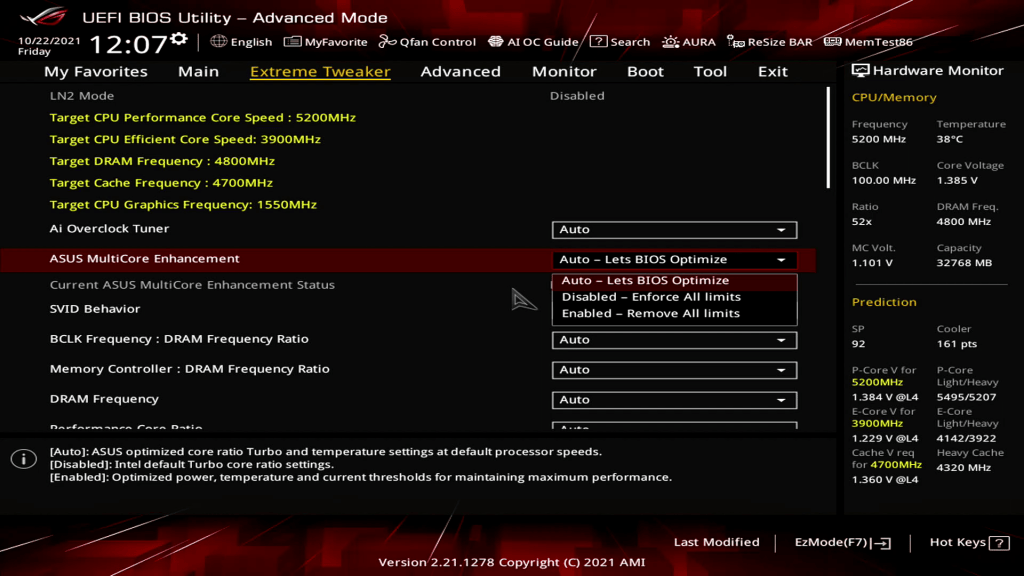
1st Generation MCE: X79 to Z270
ASUS introduced its MultiCore Enhancement (or MCE) technology on the X79 motherboards launch in 2012. It exploited performance gap created by the Turbo Boost 2.0 CPU ratio limits introduced with Sandy Bride in 2011.

The Turbo Boost 2.0 enabled higher boost performance in scenarios where fewer than all cores are active. Thus, CPUs with Turbo Boost 2.0 technology had a specified maximum boost ratio for individual cores and a maximum boost frequency for when all cores are active. For example, the Core i5-2500K had an base frequency of 3.3 GHz, would run up to 3.4 GHz when all four cores are active, but could boost to 3.7 GHz when only 1 core was active.
The first generation of the ASUS MultiCore Enhancement was, technically speaking, an automatic overclocking technology as it elevated the Turbo Boost 2.0 CPU ratio when all cores are active to match that of the 1-active core maximum ratio. So, in the example of the Sandy Bridge 2500K, that would mean the CPU frequency would be 3.7 GHz when all four cores are active.
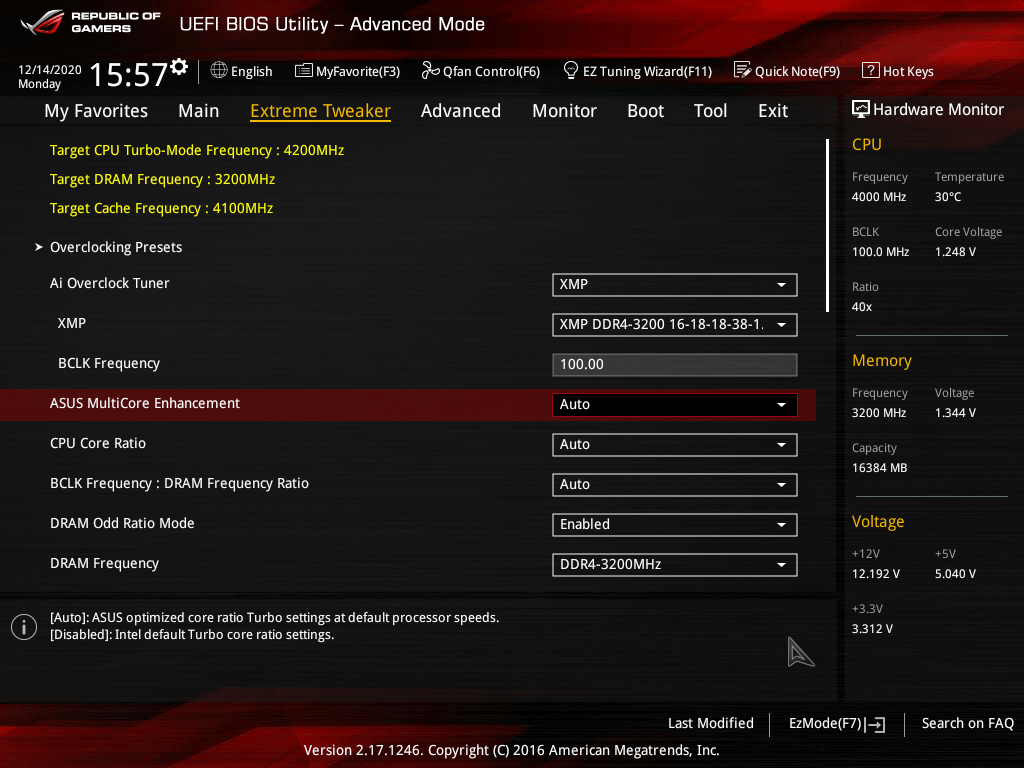
The options for this feature were either to leave it at Auto, which would enable the automatic overclock, or disable it. Disabling MCE would make the CPU operate at it’s stock Turbo Boost 2.0 configuration.
2nd Generation MCE: Z370 to Z690
The second generation of ASUS MultiCore Enhancement limits its function to unlocking the Turbo Boost 2.0 power limits. When ASUS MCE is enabled, the Turbo Boost 2.0 power limits are virtually unlocked as they’re set to the highest programmable values. For example, the Power Limit 1 (PL1) or sustained power limit is set to 4095.875W.
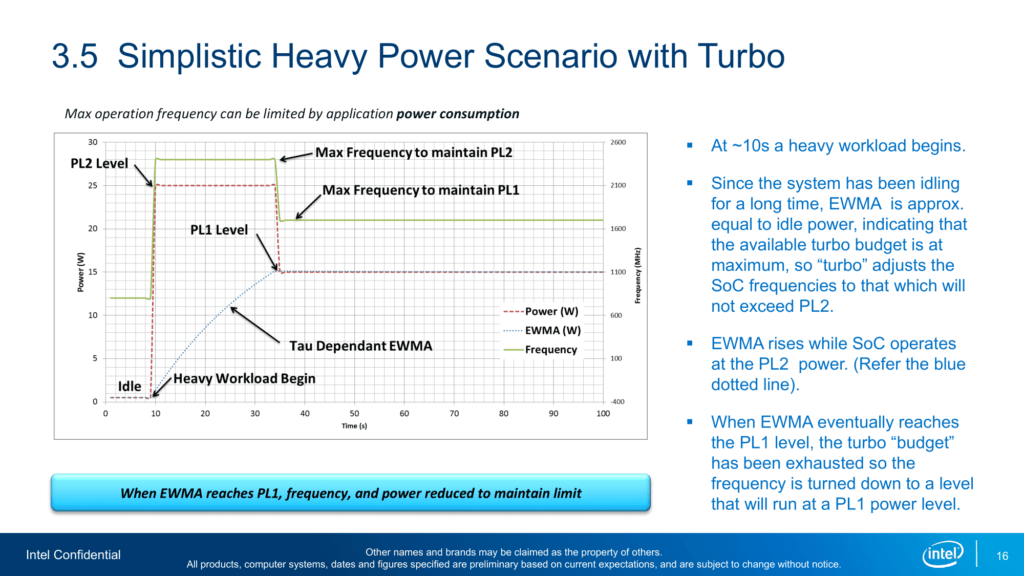
On processors with a high all-core Turbo Boost 2.0 ratio, like the Core i9 mainstream desktop processors, unlocking the power limits by enabling ASUS MultiCore Enhancement enables near maximum performance. However, on processors with a low all-core Turbo Boost 2.0 ratio, like the Xeon W workstation processors, unlocking the power limit may not yield that much of a performance improvement because the performance is still limited by the CPU ratio configuration.
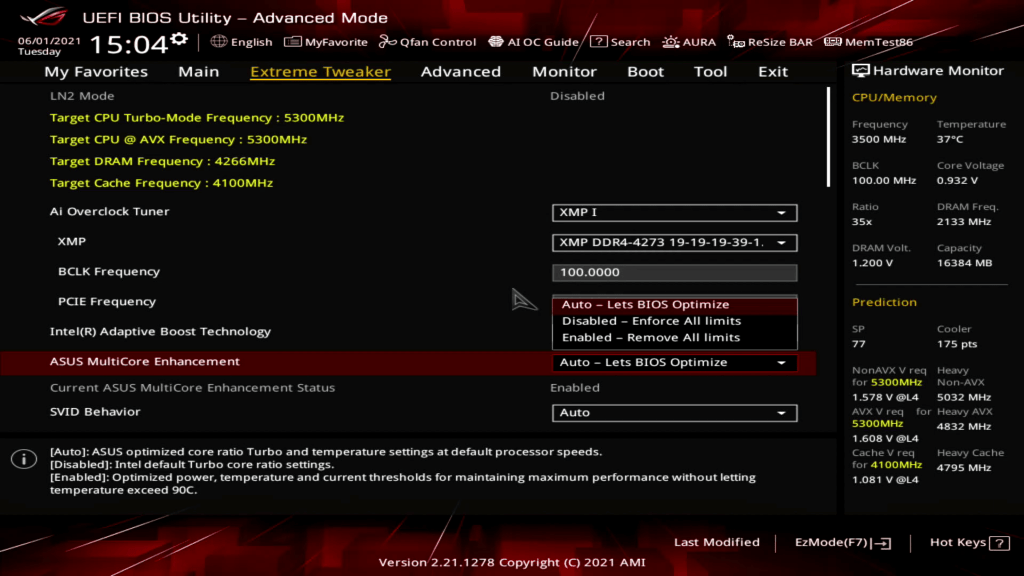
The second generation of MultiCore Enhancement provided users with three options:
- Auto, let’s the ASUS motherboard decide
- Disabled – Enforce All Limits, follows the Intel guidelines for Turbo Boost 2.0 power and ratio configuration
- Enabled – Remove All Limits, unleashes the Intel Turbo Boost 2.0 power limits for maximum performance.
3rd Generation MCE: Z790 to Today
On Z790 ASUS introduced a third generation of MCE by the inclusion of a fourth configuration option.
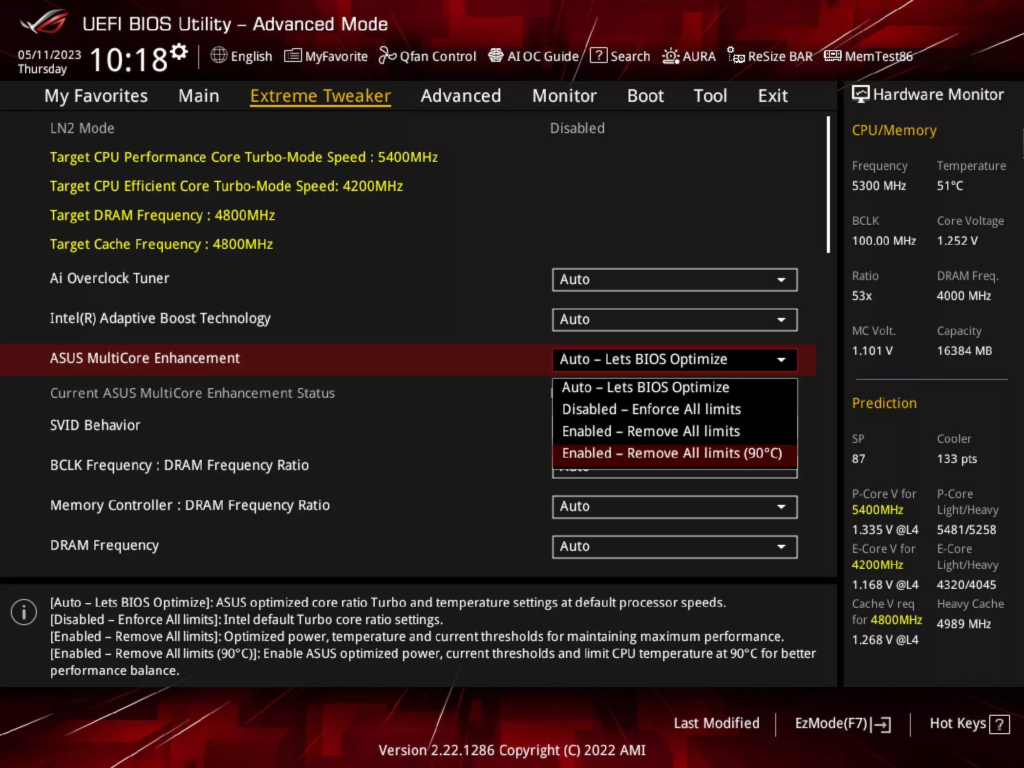
The ASUS MCE options are now:
- Auto, let’s the ASUS motherboard decide
- Disabled – Enforce All Limits, follows the Intel guidelines for Turbo Boost 2.0 power and ratio configuration
- Enabled – Remove All Limits, unleashes the Intel Turbo Boost 2.0 power limits for maximum performance.
- Enabled – Remove All Limits (90C), unleashes the Intel Turbo Boost 2.0 power limit but restricts the maximum CPU temperature to 90 degrees Celsius
ASUS MultiCore Enhancement for Overclocking in SkatterBencher Guides
We use ASUS MultiCore Enhancement in the vast majority of SkatterBencher guides where we use an Intel processor and ASUS motherboard.